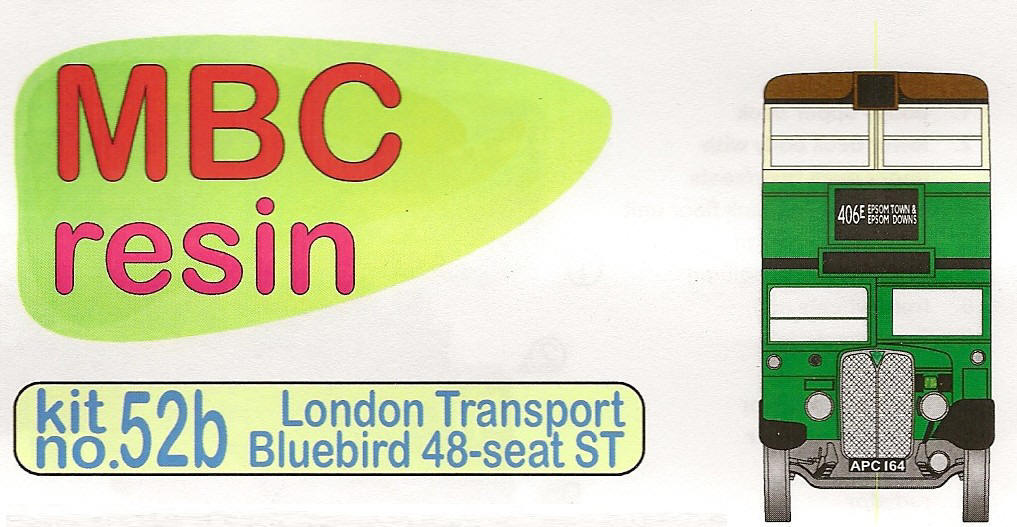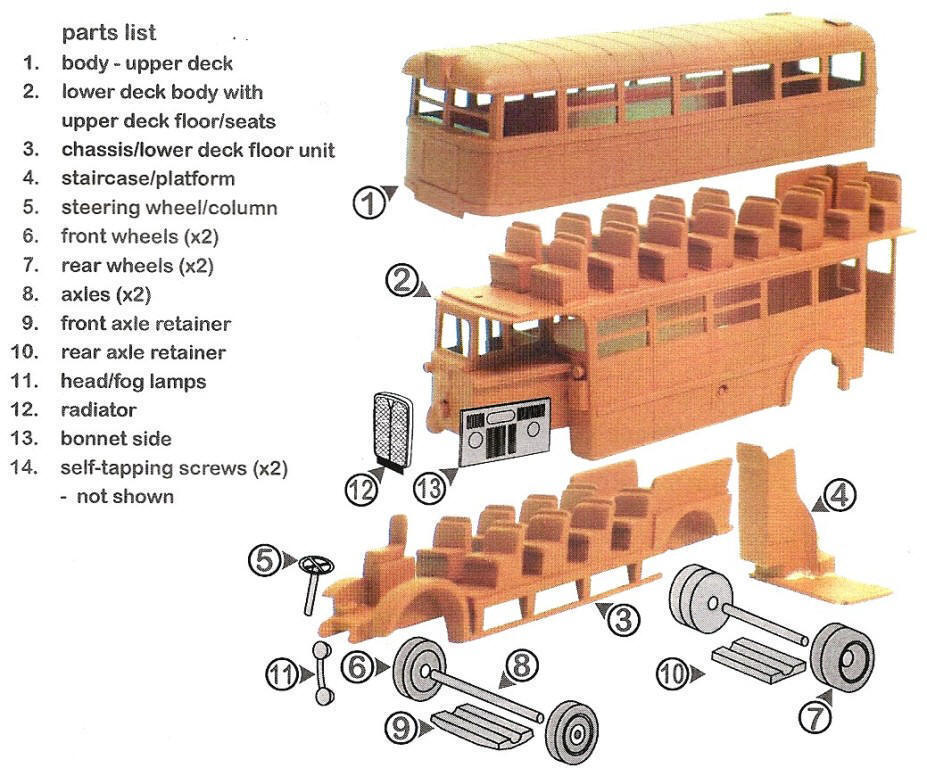
LONDON TRANSPORT BLUEBIRD ST
- KIT NO. 52B
Review by Alan Purssey

 In
the early 1930s London General Country Services Ltd. was formed to run
the country area services north and south of the capital. These services
were run on behalf of the London General by the National Omnibus Company
in the north and East Surrey in the south.
In
the early 1930s London General Country Services Ltd. was formed to run
the country area services north and south of the capital. These services
were run on behalf of the London General by the National Omnibus Company
in the north and East Surrey in the south.
In 1933 the L.G.O.C placed an order for the L.G.C.S. consisting of 25
new buses, two single deck three axle Renown’s, the remaining 23 being
as the similarly designed three axle central area ‘Bluebirds’ (so
nicknamed for the attractive blue interior decoration). These short
wheelbase Regents were fitted with a 48-seat bodies and standard country
area interiors.
These buses initially entered service at Herford, Reigate and Ware
garages. They were painted in red livery with cream windows surrounds
and carried the new London General Country fleetname consisting of a
Gold fleetname with red edges on a pale grey background. This livery was
soon to change with the formation of the L.P.T.B. In 1933 when the
livery was once again changed to the two tone green with black lining
and silver roofs which was to become standard livery for country area
buses in the fleet. This pale green did not weather very well and after
many calls from the works department, was to change around the beginning
of 1939 to Lincoln green with off white window surrounds, but still
retaining the silver roof, this was over painted with brown during the
war. The colour illustration included with the kit shows the simplified
livery with less lining to aid the lesser skilled modeller in painting.
They were all withdrawn from service in the early 1950s, thou were to
see further service as driver training vehicles with a few relegated to
the special events fleet.
This model by the MBC depicts a later pre-war/early post–war version
with the narrow gutter line with a modesty boarded offside staircase
window. It also has the split rear lower widow which was added in the
late 1940s. Like most buses of the early 1930s it had two rear bumpers
fitted - these were later removed and replaced with beading. There are
14 parts to the kit and all that is needed is some wire for the grab
handles and rear view mirrors to complete this 1930s period model.
This model has some newly designed features; the upper deck has a pip
which fits into the notch in the staircase screen just behind the
rearmost double seat. The upper body has locating guides which fit
neatly into the channels of the lower body ensuring a tight fit. The two
body halves are then secured using the smaller of the two screws through
the hole in the drivers cab roof. A piece of plastic below the front
window line is built in to take the screw, thus care is needed when
cutting the glazing for the front upper window for a snug fit. The
lower body half is secured by a larger screw to the chassis unit in the
same fashion as the single deck kits in the range.
On one of my models the upper deck rear was bowed out slightly, by
immersing in warm water for a few minutes allowed me to gently tease it
back in to shape. This can happen sometimes in the manufacturing process
if the model is removed from the mould before curing.
It is essential to ensure after painting that the channels are clear of
any paint to prevent the marrying up of the two half’s. MBC have used
the prototype design to their advantage by using the mid height band to
create a seamless appearance, not normally found on other resin double
deck models.
This is the first time this prototype has been modelled and as such was
sold out before it was publicised. If there is sufficient interest MBC
may produce more.
Two sets of transfers to complete the model are available - route 405
West Croydon, and route 406 Epsom Town at £2.95 per set from the MBC.
Period transfers for the 1930s and 1940s are available from the Fox
range. Both this model and the STL 6/1 Front entrance model are a must
for the more mature collector who can remember them in service.
Alan Purssey